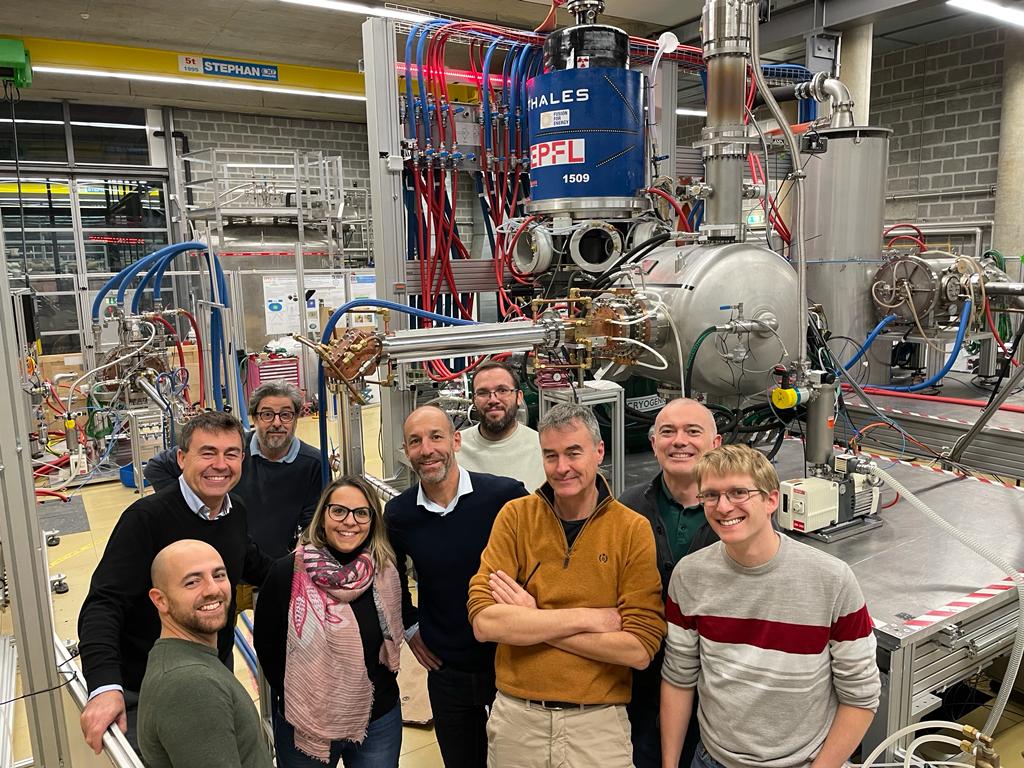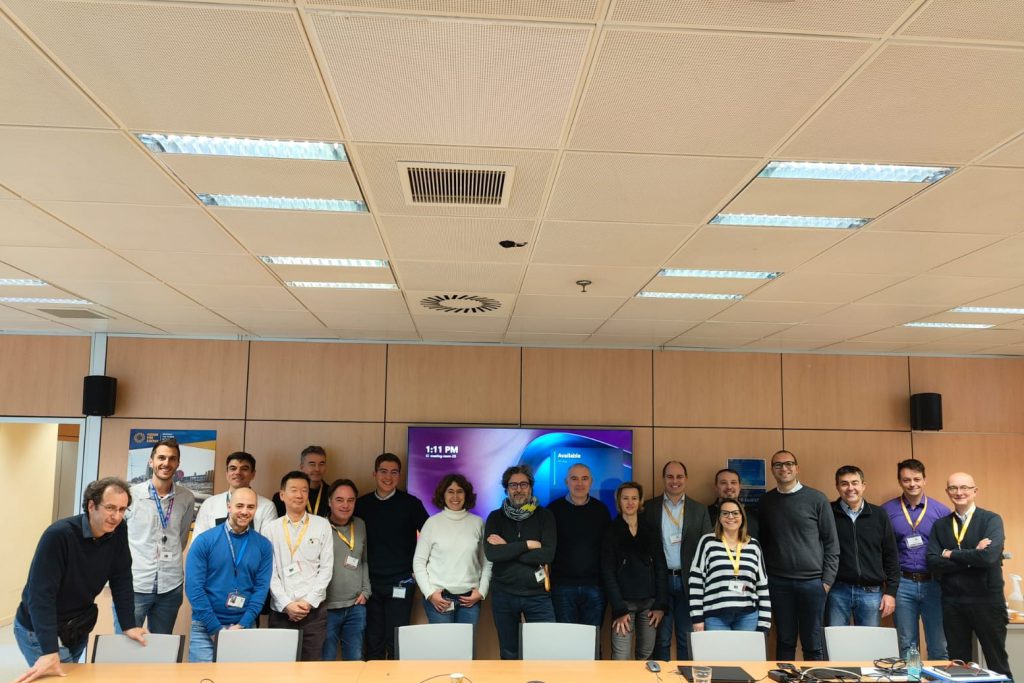Europe signs contract for the manufacturing of ITER Electron Cyclotron Gyrotrons

Representatives of F4E, DTT, Swiss Plasma Centre, Thales at the Falcon Facility, testing the DTT gyrotron pre-series unit, December 2023, Switzerland ©SPC
One of burning questions facing the ITER device is how to quench its thirst for steady power supply to heat its plasma up to 150 million °C. Several systems will work together to unleash powerful beams in the heart of the machine. One of them is the Electron Cyclotron which will use radio-frequency waves to target the electrons of the plasma. It will also reach those parts of the plasma in need of higher temperatures to keep the fusion reaction ongoing.
Where will this power come from? High Voltage Power Supplies will provide regulated, controllable, high voltage and current. They will take electricity from the grid to provide gyrotrons with a voltage (up to 90 kV) so that they produce high frequency microwaves. Then, they will travel through transmission lines of approximately 160 m until they enter the device. Once in the plasma soup, they will transmit their energy to electrons in a seamless manner because they will be in the same frequency of 170 GHz.

ITER will rely on 24 gyrotrons, each delivering a beam of 1 MW, which is 1000 times more powerful than the one produced by domestic microwaves. Russia and Japan will manufacture eight each, India will deliver two, and Europe is responsible for six. When ready, the pieces of equipment will be installed in the Radio Frequency building on-site. These cylindrical components are roughly 3 m high and 1.5 wide. But don’t be fooled by their size because most of the interesting action takes place in a space of 20 x 2 cm. This is where electricity gets transformed into electromagnetic waves.
With more fusion experiments on the horizon, the gyrotrons industry is experiencing a renaissance. There is a need for know-how, skills, and facilities to deliver these pieces of equipment. Europe has started catching up in this race which explains why F4E and the Divertor Tokamak Test (DTT) signed a Memorandum of Understanding to collaborate in a tender for the manufacturing of gyrotrons. From the start there were clear benefits on many levels in obtaining more competitive prices and making better use of resources. The tender envisaged a pilot proof of concept, pre-series unit, that was signed between DTT and Thales. Once, it proved successful the two parties went ahead with the production of the rest. In total of 22 gyrotrons are requested: 6 for F4E and 16 for DTT. Towards the end of last year, F4E signed the specific contract with Thales for the delivery of its share of gyrotrons. The works which cover manufacturing design, production, factory testing, including installation and site acceptance testing, are expected to last six years for a value of approximately 20 million EUR.

Early in February, the joint F4E -DTT kick-off meeting with Thales, took place in Barcelona signalling the start of works for the F4E units and DTT series production. Paco Sanchez, F4E’s Project Manager following this contract, explained the significance of this event. “The strategy of this tender differed to previous ones because we formed a partnership with another fusion project, DTT, as we were both interested in the same pieces of equipment. It’s a sign of what could happen in future when more of these initiatives come to fruition. Apart from the competitive rates, we will have the opportunity to learn together with the suppliers, and benefit from the proven track record of fusion laboratories, which also participate in the form of a consortium. The kick-off meeting signals the continuation of the works and the start of a meaningful partnership between F4E, DTT, Thales, and the European Fusion laboratories that could inspire other areas.”
Charles-Antoine Goffin, Vice President, Microwave and Imaging Sub-systems, Thales, shared some of his thoughts: “The shift towards cleaner and safer energy sources is of the paramount importance in the years ahead. Thales is proud to contribute to the ITER Electron Cyclotron Resonance Heating (ECRH) systems via the biggest-ever contract for gyrotrons awarded by F4E (6 gyrotrons) and DTT (16 gyrotrons). This is a confirmation of our expertise in this field of technology and underscores the success of a longstanding collaboration between Thales, F4E and the European fusion laboratories.”
Click here to learn more about the ITER Gyrotrons provided by F4E in collaboration with Thales.